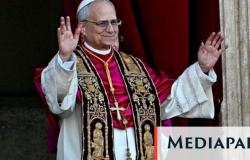This May 8, 2025, the crown prince Moulay El Hassan celebrates his 22ᵉ anniversary, a highly symbolic date in a context where the state of health of King Mohammed VI continues to fuel speculations. While the Moroccan sovereign is becoming more and more discreet on the public scene, the question of his succession is now insisted. And for the first time since the start of his reign in 1999, the hypothesis of a conflict of legitimacy at the top of the state is no longer completely excluded. The youth of the crown prince in the face of his uncle’s experience, Prince Moulay Rachid, fuels silent tensions, which could exacerbate as the throne seems less and less stable.
For several years, King Mohammed VI, whose repeated absences have been often justified by medical reasons, gradually has been erased from public life. In this partial emptiness left by the monarch, his eldest son Moulay El Hassan begins to win in official representations.
On May 7, he was seen in Salé, alongside his father, when launching a major project for the Rabat-Salé-Kénitra region. An appearance that confirms the young prince’s progressive rise in power, although still in a rigorously framed setting.
However, if Moulay El Hassan is clearly designated as heir to the throne since his birth – his first name paying homage to King Hassan II – the fact remains that he has no concrete political or institutional experience. His youth, although now adult, and his lack of official speeches leave an uncertainty about his ability to govern in the event of a vacancy of power.
-In this context, the role of Moulay Rachid, younger brother of Mohammed VI, could become central. The 54 -year -old, a diplomat, discreet but influential, Prince Rachid benefits from a more assertive institutional stature. He often represents the king during international heights or protocol ceremonies, and enjoys a capital of sympathy within the circles of power and the Moroccan elite. Some observers believe that it could appear, in the event of a crisis or rapid transition, as a reassuring appeal in the face of a young heir still little prepared for the mysteries of power.
What constitutional framework?
Morocco, a constitutional monarchy, of course, remains marked by the dynastic nature of the regime. And if tradition promotes the passage of the crown of father to son, it is not rigid. Previous people exist in other monarchies where heirs deemed too young or too inexperienced have seen their accession delayed, even bypassed. The question then arises: is the kingdom ready to see Moulay El Hassan get on the throne in the coming years, or could a consensus emerge around Moulay Rachid as a temporary or legitimate pretender?
Tensions are not expressed publicly, but weak signals are there. In diplomatic circles, foreign chancelleries, succession in Morocco is a serious subject of analysis. King’s disease, rarely officially detailed, suggests the possibility of a non -linear transition scenario, in which balances within the royal family could be redefined.
Beyond the internal dynamics, the stability of the kingdom is at stake. Mohammed VI has managed to modernize Morocco while consolidating the central role of the throne in the state apparatus. But poverty did not fall while the great fortunes of the kingdom prospered. The transition to a new generation will have to be carried out smoothly to preserve this stability, especially in a complicated regional context, but if a hidden conflict were to oppose Moulay El Hassan to Moulay Rachid, it could rekindle family, institutional, even political cleavages, with unpredictable consequences.
Thus, the anniversary of the Crown Prince, this May 8, marks the entry into adulthood of a man intended to reign, but whose ascent could be disputed. In the shadow of the royal palace, the battle for the throne could well be closer than it seems.








